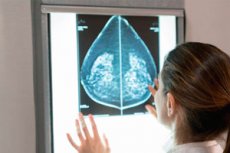
一项基于英国近 60 万名患者数据的新研究表明,乳腺癌幸存者罹患继发性癌症的风险显著升高,包括女性的子宫内膜癌和卵巢癌以及男性的前列腺癌。
研究首次发现,居住在社会经济水平较低地区的人们患此病的风险更高。
乳腺癌是最常见的癌症。全球每年约有230万例乳腺癌病例,其中绝大多数(超过99%)发生在女性身上。早期发现和治疗的进步提高了乳腺癌的五年生存率,2017年在英格兰达到87%。
乳腺癌幸存者存在罹患第二原发性肿瘤的风险,但具体风险程度尚不清楚。此前发表的研究表明,与普通人群相比,女性和男性乳腺癌幸存者罹患非乳腺相关第二原发性肿瘤的几率分别高出24%和27%。此外,还有研究指出,罹患第二原发性肿瘤的风险取决于乳腺癌确诊时的年龄。
为了获得更准确的估计,剑桥大学的一组研究人员分析了 1995 年至 2019 年间确诊患有乳腺癌的 580,000 多名女性和 3,500 多名男性的数据。他们的分析结果发表在《柳叶刀区域健康-欧洲》杂志上。
该研究的第一作者、剑桥大学公共卫生与初级保健系的艾萨克·艾伦表示:“了解一种癌症在多大程度上会增加罹患其他癌症的风险至关重要。乳腺癌幸存者的女性和男性罹患多种继发性肿瘤的风险更高。这些知识有助于他们与医生讨论如何监测可能出现的新肿瘤迹象。”
研究人员发现,患对侧(即未受影响的)乳房癌症的风险显著增加,女性患子宫内膜癌的风险显著增加,男性患前列腺癌的风险也显著增加。乳腺癌幸存者患对侧乳腺癌的风险是普通人群的两倍,患子宫内膜癌的风险高出87%,患髓系白血病的风险高出58%,患卵巢癌的风险高出25%。
诊断年龄也很重要。50岁前确诊乳腺癌的女性,罹患第二原发性乳腺癌的风险比同龄普通人群高86%,而50岁后确诊的女性,罹患第二原发性乳腺癌的风险则高17%。一个可能的解释是,更多年轻的乳腺癌幸存者可能遗传了基因变异,这增加了她们罹患多种癌症的风险。例如,携带BRCA1和BRCA2基因变异的女性罹患对侧乳腺癌、卵巢癌和胰腺癌的风险更高。
与社会经济条件最贫困的女性相比,来自社会经济条件最贫困背景的女性罹患第二原发性肿瘤的风险高出35%。这些差异主要源于与乳腺癌无关的风险,尤其是肺癌、肾癌、头颈癌、膀胱癌、食道癌和胃癌。这可能是因为吸烟、肥胖和饮酒——这些癌症的已知风险因素——在贫困群体中更为常见。
艾伦博士生克莱尔·霍尔补充道:“这进一步证明了来自弱势群体在医疗保健方面面临的不平等。我们需要充分了解他们患继发性肿瘤的风险更高的原因,以便我们能够采取干预措施来降低这种风险。”
与一般男性人群相比,男性乳腺癌幸存者罹患对侧乳腺癌的风险高出55倍,但研究人员强调,个体风险仍然较低。例如,每100名50岁或以上确诊患有乳腺癌的男性中,约有3人在25年内患上对侧乳腺癌。与一般男性人群相比,男性乳腺癌幸存者罹患前列腺癌的风险也高出58%。
该研究的资深作者、剑桥大学公共卫生与初级保健系的安东尼斯·安东尼奥教授表示:“这是迄今为止规模最大的一项研究,探讨了乳腺癌幸存者罹患第二肿瘤的风险。我们之所以能够开展这项研究并获得更准确的估算,得益于英国国家医疗服务体系(NHS)为研究人员提供的大量数据集。”
英国癌症研究中心高级癌症信息经理卡特里娜·布朗表示:“这项研究表明,乳腺癌患者罹患第二原发性肿瘤的风险更高,而且这种风险可能因个人的社会经济地位而异。但仍需开展更多研究,以了解造成这种差异的原因以及如何解决医疗保健方面的不平等问题。”

